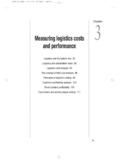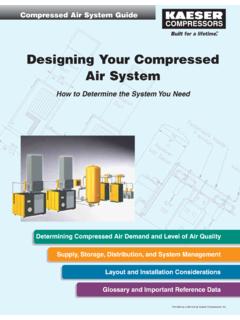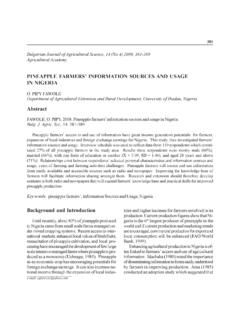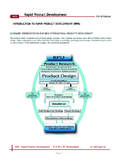Transcription of Neste Renewable Diesel Handbook
1 Neste Renewable Diesel Handbook1 Neste Proprietary publicationForewordThis booklet provides information on Neste Renewable Diesel , in Europe classified as a Hydrotreated Vegetable Oil (HVO), and its use in Diesel engines. Its potential readership consists of, , fuel and exhaust emission professionals in oil companies, automotive industry representatives, fuel blenders, research facilities, and people preparing fuel standards and to this text have mainly been Ari Engman, Tuukka Hartikka, Markku Honkanen, Ulla Kiiski, Markku Kuronen, Kalle Lehto, Seppo Mikkonen, Jenni Nortio, Jukka Nuottim ki and Pirjo Saikkonen from Neste . This booklet will be updated periodically when enough new or additional information has become questions are welcome to as well as proposals for issues to be taken into account in the next update.
2 Espoo, May 2016 Neste CorporationDisclaimerThis publication, its content and any information provided as part of the publication are solely intended to provide helpful and generic information on the subjects discussed. This publication should only be used as a general guide and not as the ultimate source of information. The publication is not intended to be a complete presentation of all the issues related to Neste Renewable Diesel . The authors and publisher are not offering this publication as advice or opinion of any kind. There may be mistakes, both typographical and in content, in this publication and the information provided is subject to changes. Therefore, the accuracy and completeness of information provided in the publication and any opinions stated in the publication are not guaranteed or warranted to produce any particular results.
3 The authors and the publisher make no representation or warranties of any kind and assume no liabilities of any kind with respect to the accuracy, sufficiency or completeness of the publication and specifically disclaim any implied warranties of fitness for use for a particular purpose. The authors and the publisher shall not be liable for any loss incurred as a consequence of the use and application, directly or indirectly, of any information provided in the part of this publication may be reproduced without the prior written permission of the publisher. NEXBTL , Neste , Neste Oil and Neste brand are trademarks and intellectual property rights of Neste Group. References provided in this publication are provided for information purposes only and intellectual property rights relating thereto are property of a third party.
4 No rights with respect to Neste Group or third party intellectual property rights are Neste Proprietary publicationContentsForeword ..1 Disclaimer ..1 Contents ..2 General ..3 Fuel specifications ..6 EN 15940:2016 ..6 EN 590:2013 Diesel fuel standard ..7 HVO s position in EN 590:2013 ..8 prEN 16734 B10 Diesel fuel standard draft ..9 EN 16709:2015 B20 and B30 Diesel fuel standard ..9 ASTM HVO and EN 14214 FAME standard ..9 Worldwide Fuel Charter (WWFC) ..10 Legislative fuel composition requirements in Europe ..10 Directives of the European Union ..10 Legislative requirements for free markets ..11 Case: Fuel taxation in Finland ..12 Fuel properties ..14 Density and energy content.
5 14 Distillation ..15 Cold properties ..16 Cetane number ..17 Stability ..18 Sulfur content ..19 Ash and metals content ..19 Filterability ..19 Water content ..19 Microbial growth ..20 Appearance and odor ..20 Lubricity ..21 Ways to use Neste Renewable Diesel ..22 Blending properties with Diesel fuel ..23 Storage and blending of Neste Renewable Diesel with FAME ..24 Blending of GTL and Neste Renewable Diesel ..24 Logistics ..25 Custom codes ..25 Compatibility with materials ..26 Measurement of Neste Renewable Diesel content in Diesel fuel ..26 Environmental properties ..28 Renewable energy and greenhouse gas Case: Greenhouse gas balance of Renewable Diesel .
6 29 Tailpipe emissions ..30 Other health and environmental properties ..35 Performance in engines ..36 Hydrocarbon type fuels ..36 Fuel consumption ..37 Engine power and torque ..39 Engine oil dilution and deterioration ..40 Injector fouling ..43 Auxiliary heaters ..45 Statements made by automotive and engine manufacturer industry ..46 Optimizing engines for HVO ..48 Field trials ..49 Market experience ..51 USA, Austria, Sweden and Other countries ..52 Public reports and articles ..53 Acronyms ..563 Neste Proprietary publicationGeneralThe common acronym HVO comes from Hydrotreated Vegetable Oil or Hydrogenated Vegetable Oil . They originate from last decade when only vegetable oils were used as feedstocks.
7 Today more and more of HVO is produced from waste and residue fat fractions coming from food, fish and slaughterhouse industries, as well as from non-food grade vegetable oil fractions. Thus HVO and Hydrotreated Vegetable Oil are no longer accurate terms describing the origin of the fuel. However, those terms cannot be changed easily since they are common in the European regulation, fuel standards, and biofuel quality recommendations set by automotive companies. According to several chemistry experts Hydrotreated referring to fuel processing should be preferred instead of Hydrogenated as the latter is commonly linked to manufacturing of Corporation calls its own product Neste Renewable Diesel .
8 Renewable Paraffinic Diesel has also been commonly used as it is chemically a proper definition for product quality. However, this term covers also pilot scale BTL fuels made by Fischer-Tropsch synthesis and, therefore, does not define feedstock and process used to produce HVO . Also terms HDRD Hydrogenation Derived Renewable Diesel , Non Ester Renewable Diesel , Renewable Hydrocarbon Diesel , and HBD Hydro-generated Biodiesel have been used especially in North America and Far East. The European EN 15940 standard uses a definition Paraffinic Diesel Fuel from Hydrotreatment . This document refers to isomerized high cetane number (above 70) products meeting EN 15940 Class A requirements.
9 In this document HVO , Neste Renewable Diesel and Renewable Diesel are used to refer to such hydrotreating of vegetable oils as well as suitable waste and residue fat fractions to produce HVO is a quite new but already mature commercial scale manufacturing process. It is based on oil refining know-how and is used for the production of biofuels for Diesel engines. In the process, hydrogen is used to remove oxygen from the triglyceride vegetable oil molecules and to split the triglyceride into three separate chains, thus creating hydrocarbons which are similar to existing Diesel fuel components. This allows blending in any desired ratio without any concerns regarding fuel quality.
10 Traditionally, Diesel components produced from vegetable oils are made by an esterification process. The products are called Fatty Acid Methyl Esters FAME or biodiesel . Other acronyms are also used, such as Rape Seed Methyl Ester RME , Soybean Methyl Ester SME , Palm Oil Methyl Ester PME , or Used Cooking Oils Methyl Ester UCOME .A very simplified scheme regarding the inputs and outputs of esterification and hydrotreating processes is shown in the Figure 1 below. More detailed descriptions about all feedstock and energy streams, as well as products, side products and emissions from the production plan can be generally found from the case-by-case Life Cycle Assessments.





